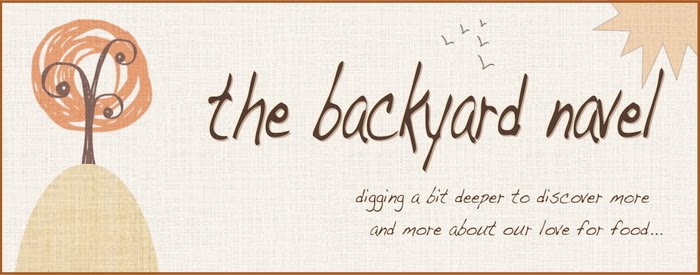On Monday, November 15, Ria restaurant, one of my newest partners, will team up with the Shedd Aquarium to present an “Ocean Friendly” dinner featuring a sustainably-sourced menu. For the next three days, Ria General Manager Brian O’Connor will discuss the complexities and concerns associated with sourcing sustainable seafood, a struggle difficult for restaurants, but one I hope more and more take on—and one I've written about at length in the past.
 |
| The Shedd Aquarium via setholiver1's photostream. |
Hi there. Thanks to Johnny Auer for providing this opportunity to think out loud (or in type) about some of the challenges and rewards involved with sustainable seafood. I’ll be posting three times on the subject: today I’ll discuss the general goals and criteria of sustainable sourcing, tomorrow I’ll get into some examples we face each day in the restaurant, and then Friday I’ll do my best to describe the future direction I see the whole endeavor heading.
Sourcing sustainable seafood presents even more complex challenges than those associated with other sustainable food. The usual concerns associated with sustainable sourcing are there: environmental impact, methods of production, and of course quality of the product. Additionally, we have to worry about the uncertainty inherent in a longer supply chain, the stability of species populations and the length of their reproductive lifecycle, and even the effectiveness of public and private oversight.
Investigating the sustainability of our seafood presents other problems. We make it a point to regularly visit and communicate with our farmers, and we can see firsthand the methods used and even debate their effectiveness when necessary. Getting out to the Alaskan seas three times a year, however, is prohibitively expensive. If we were able, we’d still have a hard time tracking the vulnerability of population stock or seeing if the rest of the fleet fishing the species were as responsible as the boat we were on. The issue is vast as—well—the ocean.
Thankfully, we have the work of the Monterey Bay and John G. Shedd Aquariums to guide us. Through their Seafood Watch and Right Bite programs, they collect and distribute a wealth of information regarding wild and farmed seafood. Monterey Bay has even established a set of guiding principles and criteria for objectively judging sustainability. These criteria group fish into three categories: Best Choices (Green), Good Alternative (Yellow) and Avoid (Red). These evaluations are invaluable to the chef or restaurateur interested in sourcing sustainable seafood.
 |
| Shedd's Right Bite wallet card, download it here. |
There are five Seafood Watch criteria for evaluating the sustainability of wild-caught seafood. They focus on the stability of the species itself, the effects of capture on the surrounding environment and the effectiveness of enforcing any necessary limits on catch. Here they are:
• Inherent vulnerability to fishing pressure
The more resilient a species, the less likely it is to be overfished. For this criterion we consider the growth rate of the fish, its fecundity (a great term for reproductive capacity), and its maximum age.
Compare a sardine and a coastal shark. Sardines begin reproducing as young as two years old and live 5-10 years. Additionally, they produce loads of offspring. Sharks mature in 8-15 years (longer for females), can live 30+ years and produce only a handful of young. The shark is inherently vulnerable to overfishing because it cannot reproduce as quickly as it can be caught.
 |
| Mediterranean sardines via anthony plewes' photostream. |
• Status of wild stocks
This criterion evaluates how “endangered” a species is. We consider the overall biomass of the species and the rate at which it is captured. This is surprisingly difficult to assess accurately. (Imagine trying to count all the sardines in the Mediterranean: How do you find them all? How do you ensure you don’t count a sardine twice? These are just the initial challenges.)
Because of the difficulty accurately assessing wild stocks, the Seafood Watch program adopts a conservative position: uncertainty is assumed unsustainable. If we cannot be sure the health of a stock, it is considered unhealthy. As we will see in the coming days, this leads to some of the most interesting questions in the evolution of the program.
• Nature and extent of discarded by-catch
As anyone who has been fishing can attest, one can never be sure what is on the end of the line until it is reeled in. As the scale of fishing increases from basic hook-and-line to longlines with hundreds of hooks to football-field-sized trawls dragged along the ocean floor, it becomes more difficult to catch only the intended fish. Methods which reduce or eliminate by-catch are more sustainable.
We often look for hook-and-line caught fish as it not only limits by-catch (which is quickly thrown back), but also because the smaller scale tends to lead to better quality product. Each fish pulled aboard is cared for properly: the body is not packed awkwardly, bending and denaturing the flesh; it is processed as necessary and sent to us as quickly as possible; also, it provides a more direct link between the source of the product and the final dish. In addition to hook-and-line, diver-harvested and trapped seafood also tend to limit by-catch.
• Effect of fishing practices on habitats and ecosystems
This criterion directly addresses the double-whammy of massive trawling operations. As the anchors holding down the trawl net scrape along the ocean floor, entire ecosystems are disturbed and even destroyed. The smaller-scale the operation and the less invasive the method, the smaller the footprint left behind.
Additionally, this section looks at the role the fish itself plays in the larger ecosystem. Removing a creature that is a vital link in the food chain can have lasting consequences far beyond immediate physical damage.
 |
| What you might find when eating at Ria... |
• Effectiveness of the management regime
For the final standard we take a step back and investigate exactly how all of the above criteria are managed and enforced. Many fisheries limit yields or methods of capture, but if there is no enforcement mechanism these limits are routinely ignored. Additionally, the disincentives must be strong enough to stop the offending behavior but not so strong they discourage good fishing practices.
Again, uncertainty is treated as unsustainable. Without a certifiable metric for measuring effectiveness, management regimes are assumed to be “good alternatives” at best. To address this challenge, a number of different operations have emerged, from completely government-controlled and operated to those formed by industry association and privately overseen. In time, we will be able to better assess how each of these designs works and hopefully take the best of each to move forward.
So that’s a (somewhat) brief introduction to how we think about sustainable seafood. The Seafood Watch guiding principles and criteria give us a great starting point to examine the product we are using in the kitchen. Sometimes small changes can make huge improvements in practice: switching from Atlantic to Pacific Halibut or dropping Monkfish off a menu immediately make it more sustainable.
The real challenge is in the gray areas. Should I use wild diver-caught scallops? If I know the person fishing my black bass and I am certain she fishes it sustainably, am I right to use it? These are the real questions we face each day in the restaurant and these are the questions I’ll address tomorrow.
See you then!





Great post! I’m looking to make some changes in my own eating habits, so I appreciate your insight a lot! Thank you. I recently stumbled upon this blog like I did yours and I thought your readers may appreciate it: http://burisonthecouch.wordpress.com/2010/11/04/food-for-thought/
ReplyDeleteI’ve started to look for their stuff more regularly and I think I’m going to add your blog to my list as well. Thanks for the post!
-Amy
thanks for the comment, amy—and thanks a bunch for the blog recommendation. do you have one too??
ReplyDeleteand there's so much going on with food right now, it's really exciting—and pretty easy to learn about things, too. you live in chicago?